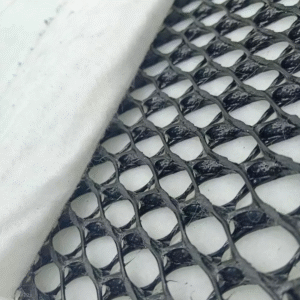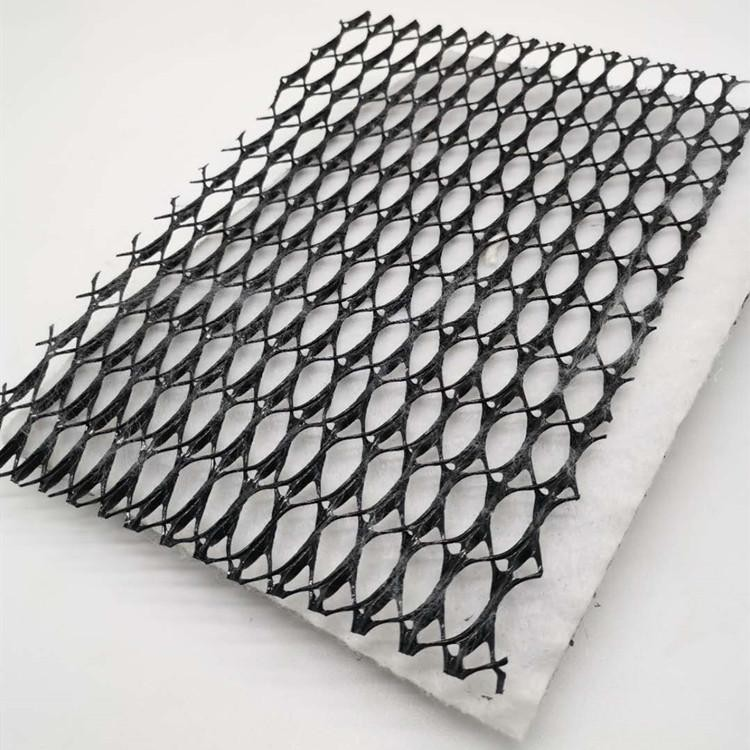In engineering projects, the efficiency of the drainage system is crucial for the safety and durability of the project. The three-dimensional composite drainage net is a commonly used material in various major engineering projects. So, what are its advantages?

I. Overview of Three-Dimensional Composite Drainage Net
The three-dimensional composite drainage net is made by bonding a permeable geotextile to both sides of a three-dimensional plastic net. It is manufactured from high-density polyethylene (HDPE) through a special extrusion molding process. It features a three-layer special structure: the central ribs are rigid and arranged longitudinally to form drainage channels; the ribs arranged crosswise on the top and bottom form supports that prevent the geotextile from embedding into the drainage channels, ensuring efficient drainage performance even under high loads.
II. Advantages of Three-Dimensional Composite Drainage Net
1. High-Efficiency Drainage Performance
The three-dimensional composite drainage net has extremely strong drainage capacity. Its drainage performance is equivalent to that of a one-meter-thick gravel layer. The drainage channels formed by the central ribs can rapidly discharge groundwater or surface water, preventing damage to engineering structures caused by water accumulation.
It boasts high tensile and shear strengths, enabling it to withstand long-term high-pressure loads without deformation. The three-dimensional structural design not only enhances the overall stability of the material but also reduces the likelihood of the geotextile embedding into the net core, ensuring long-term stable water conductivity.
3. Corrosion Resistance and Long Service Life
The three-dimensional composite drainage net is made of high-density polyethylene, a material that is resistant to corrosion, acids, and alkalis. It has a long service life and can maintain stable performance in various harsh environments.
4. Convenient Construction and Cost-Effectiveness
Compared with traditional drainage systems composed of sand and gravel layers, the three-dimensional composite drainage net offers more convenient and faster construction, which can shorten the construction period and reduce costs. Moreover, its excellent drainage performance allows for a reduction in the amount of foundation materials used, further lowering engineering costs.
5. Versatility
The three-dimensional composite drainage net not only serves a drainage function but also provides functions such as filtration reversal, ventilation, and protection. It can isolate different soil layers, prevent soil loss, and protect the foundation and drainage system from damage by the external environment.
III. Applications
The three-dimensional composite drainage net can be used in various fields, including railways, highways, tunnels, municipal engineering projects, reservoirs, and slope protection.
1. In railway subgrade and pavement drainage projects, the three-dimensional composite drainage net can discharge groundwater, prevent subgrade softening, and improve the service life of the road.
2. In tunnel engineering, it can promptly discharge mountain seepage water, protecting the tunnel structure from water damage.
As can be seen from the above, the three-dimensional composite drainage net has excellent drainage performance. It not only improves the efficiency and stability of the drainage system but also reduces engineering costs and maintenance difficulties.


